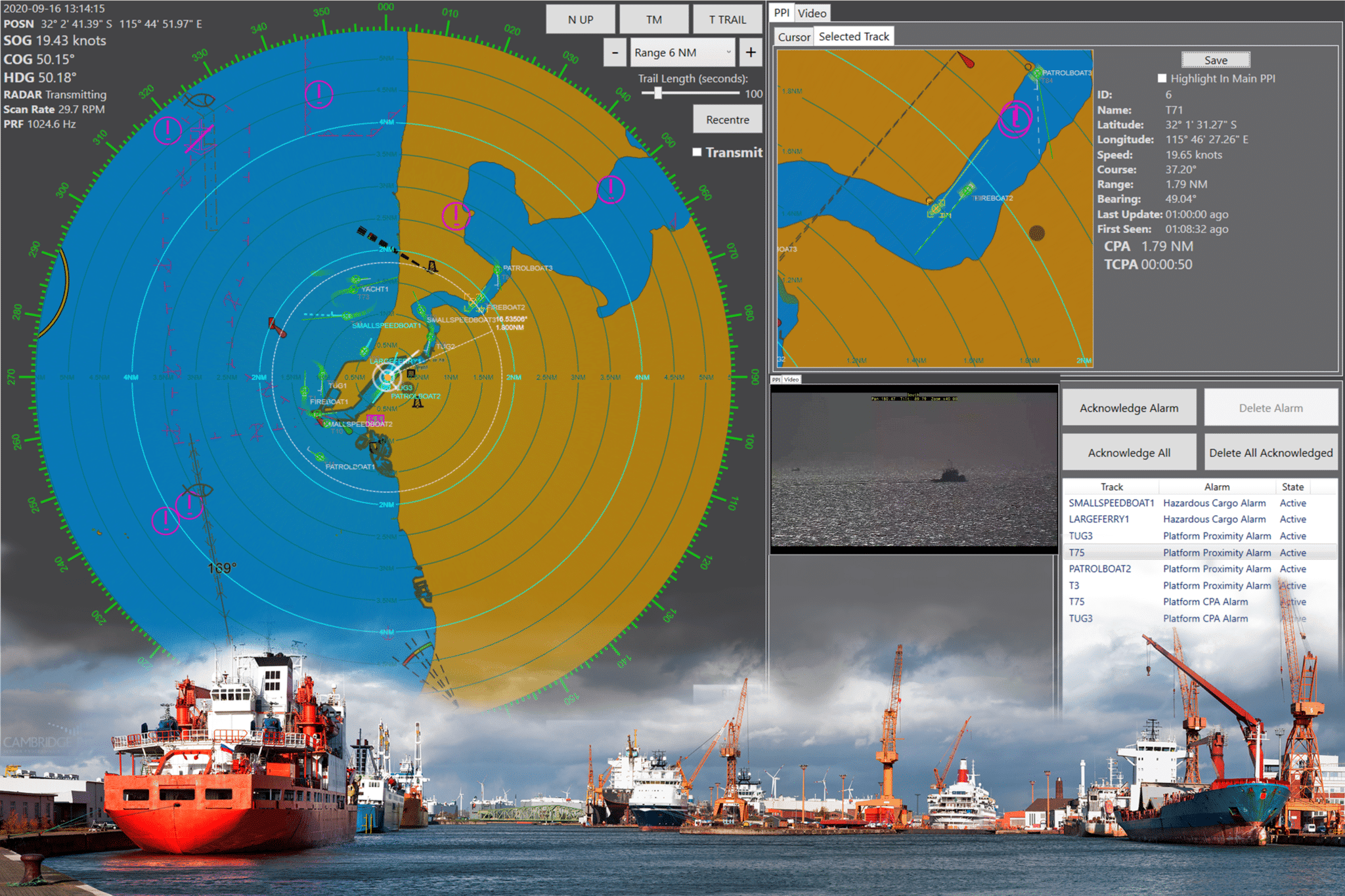
Cambridge Pixel – a developer of radar display, tracking and recording sub-systems – has introduced the Maritime Display Framework (MDF), an out-of-the-box software application that provides a set of core capabilities to enable maritime integrators to accelerate the development of ARPA (automatic radar plotting aid) radar display consoles.
The new software provides a .NET framework, optionally with source code, that can be used as the starting point for a custom ship-based application, providing display of primary radar, radar tracks, electronic navigational charts (S-57/S-63), secondary transponder information, such as AIS and ADS-B and NMEA navigation data.
The MDF software can receive radar video from a variety of maritime radar sensors including Furuno, Hensoldt, JRC, Koden, Raymarine, Raytheon, Simrad, Sperry and Terma, with control of the radar supported for certain models.
The MDF software supports many display capabilities required in an ARPA display, including bearing lines, range markers, trails and closest point of approach (CPA) and time to CPA (TCPA). Additionally, camera video is supported for situations where a customer requires an integrated radar and camera display for security against piracy and smugglers.
David Johnson, CEO, Cambridge Pixel, remarked: “Using the MDF framework application with source code, developers can significantly accelerate the time to develop a customer application. The software offers a fully-functional out-of-the-box display application in a development environment so that customised displays can easily be created.”
“Our MDF software application provides maritime integrators with a working solution from day one and gives them the freedom to add the bells and whistles later,” continued Johnson. “So rather than a developer starting from scratch with a low-level library of modules we provide those building blocks as a pre-packaged application to fast-track development.
“This is attractive to new entrants to the ARPA display console market and for software developers who may be looking for a better pedigree of standard modules for their application and who want to focus their software development efforts on customisation.”
To find out more information, visit: www.cambridgepixel.com